The Killing

Brief Synopsis
Cast & Crew
Stanley Kubrick
Sterling Hayden
Coleen Gray
Vince Edwards
Jay C. Flippen
Ted Decorsia
Film Details
Technical Specs

Synopsis
At a big city racetrack, bookkeeper Marvin Unger covertly gives bartender Mike O'Reilly a note detailing the time and place of a meeting later that night, then retrieves his small winnings from cashier George Peatty. A little earlier that same day, patrolman Randy Kennan meets with loan shark Leo and assures him that he will be able to repay his entire loan within two weeks. At Unger's apartment that evening, ex-convict Johnny Clay, just released from prison after serving a five-year sentence for robbery, reunites with his girl friend Fay and promises her that his detailed plan for an upcoming heist will guarantee their future together. A little later, George arrives at his apartment where his beautiful but cynical wife Sherry nags him about their constant poverty. In anger, George reveals he may be coming into a large amount of money, then refuses to explain, prompting Sherry to complain that George does not trust her. After George departs for a meeting, Sherry meets her lover, Val Cannon, and confides that George finally confessed to being involved with a small gang of men who plan to rob the racetrack proceeds. At eight o'clock that evening, Johnny meets with Unger, O'Reilly, Kennan and George to finalize their roles for the robbery. Johnny estimates that the track take will be nearly two million dollars and reveals that two other trustworthy men will assist them. While the men express concern over the two unknown conspirators, Sherry is caught eavesdropping just outside the room. George hastily claims his wife must have suspected him of cheating and followed him. After ordering the men away, Johnny threatens Sherry, telling her that if she interferes in the robbery she will only prevent George from receiving his cut of the proceeds. Later that night at the Peattys' apartment, George decides to withdraw from the plan, but Sherry convinces him that the money will rejuvenate their troubled marriage. Three days later, Johnny meets with burly, former wrestler Maurice Oboukhoff, who agrees to start a brawl at the racetrack bar just before the critical seventh race when the robbery will occur. The same day, Johnny hires sharpshooter Nikki Arane to shoot racehorse Red Lightning during the seventh race in order to heighten the planned pandemonium. Johnny then rents a motel room from Joe Piano, the father of his prison cellmate, and stores a machine gun there. The next morning, Sherry awakens early to find George already up and surmises this is the day of the planned heist. Before departing for work at the track that morning, O'Reilly bids farewell to his invalid wife and promises he will be able to provide better doctors for her soon. O'Reilly then stops at a bus station locker where he picks up the machine gun in a flower box that Johnny had placed there earlier, then continues on to the track. When Nikki drives onto the track grounds he is diverted by a guard, but convinces the man to let him park near the track. Some miles away, Kennan telephones headquarters to report a radio malfunction in his squad car, then drives on to the track. Just as the seventh race begins, Maurice, feigning drunkenness, starts a fight with O'Reilly at the bar and all of the building guards are summoned to quell the brawl. As planned, halfway into the race, Nikki shoots and kills Red Lightning, whose collapse causes several horses to go down and excites the crowd and track personnel. While trying to flee the parking lot, however, Nikki panics and is shot and killed by a guard. While the guards are busy trying to subdue Maurice, George lets Johnny into the back office. Wearing a disguise, Johnny takes the gun hidden in O'Reilly's locker and holds up the accountants in the central office. After locking the men away, Johnny places the money, his disguise and the gun in a duffel bag, which he then throws out the window to Kennan, who is waiting below. A little later at a prearranged apartment, Unger, O'Reilly, Kennan and George are waiting for Johnny, who is bringing the money that Kennan has left at the motel, when Val and accomplice Tiny burst into the room and demand the track proceeds. When Val mocks George, revealing that he learned of the job from Sherry, George shoots him. Val squeezes his shotgun trigger before collapsing and the spray kills all of the other men and severely wounds George. Delayed by traffic, Johnny arrives at the apartment fifteen minutes late and sees the bleeding George stumble across the street to his car. Because the men had agreed that if anything went wrong, the one in possession of the money would keep it and divide it with the others at a later date, Johnny drives away with the money. George arrives home and confronts Sherry, who cautions him to leave before Val arrives. George denounces Sherry before shooting her, then dies from his wounds. After placing the bills in a large, old suitcase, Johnny discovers that the locks do not work but proceeds to meet Fay at the airport where he has pre-purchased tickets for a flight to Boston. Although Johnny insists he must be allowed to carry the bulky suitcase on board, the airline officials refuse and he reluctantly checks it. Johnny and Fay then go outside to watch the luggage being loaded onto the plane. Just then a small poodle runs onto the tarmac, forcing the luggage-cart driver to swerve. During the maneuver, Johnny's suitcase falls to the ground and breaks open, releasing all of the bills, which whirl through the air. Fay pulls the stunned Johnny away and they exists the terminal, but an airline official reports Johnny as the suitcase owner to two plainclothes policemen. As Fay desperately tries to hail a cab, the two policemen walk toward her and Johnny.

Director

Stanley Kubrick
Cast

Sterling Hayden

Coleen Gray

Vince Edwards

Jay C. Flippen
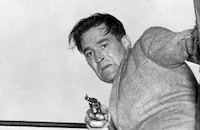
Ted Decorsia

Marie Windsor

Elisha Cook
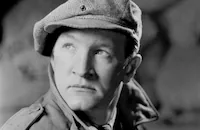
Joe Sawyer

James Edwards
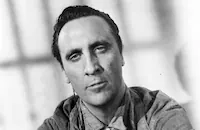
Timothy Carey
Kola Kwariani
Jay Adler

Tito Vuolo
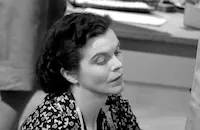
Dorothy Adams

James Griffith
Cecil Elliott
Joseph Turkel
Steve Mitchell
Mary Carroll
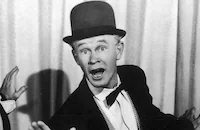
William Benedict
Charles Cane
Robert B. Williams
Art Gilmore
Crew
Lucien Ballard
Beaumelle
Carl Brainard
Milton Carter
Lou Cortese
Louis Dewitt
Paul Eagler
Christopher Ebsen
Clarence Eurist
Paul Feiner
Gerald Fried
Carl Gibson
Mary Gibsone
Rudy Harrington
James B. Harris
Joyce Hartman
Robert Hosler
Bobby Jones
Howard Joslin
Joe Keener
Dave Koehler
Stanley Kubrick
Dave Lesser
Robert Littlefield
Gilbert Marchant
Jack Masters
Marguerite Olson
Bud Pine
Jack Rabin
Harry Reif
Lillian Shore
Alexander Singer
Earl Snyder
Ruth Sobotka
Betty Steinberg
Robert L. Stephen
Jim Thompson
Dick Tower
Rex Upton
Ray Zambel

Photo Collections
Videos
Movie Clip





Hosted Intro
Film Details
Technical Specs

Articles
The Killing
Following Fear and Desire (1953) and Killer's Kiss (1955), two low-budget features which received limited distribution and were later dismissed by Kubrick as insignificant, the director wrote a screenplay of Lionel White's novel, Clean Break. With his partner, producer James B. Harris, they convinced Sterling Hayden to accept the lead role and once his involvement was secured, United Artists agreed to put up $200,000 which was later supplemented by an additional $120,000, raised privately by Harris. Although it was a low budget production by Hollywood standards, The Killing marked the first time Kubrick was able to work with a professional crew and established actors. Notice the way Kubrick takes full advantage of his budgetary limitations by tracking his camera through the cheap cardboard sets, creating a palpable sense of doom and paranoia. It was a technique he mastered after watching the films of Max Ophuls.
Marie Windsor, who gives a riveting performance opposite Elisha Cook, Jr. as his conniving, ruthless wife, discussed the making of The Killing with Mark A. Miller for a Filmfax article on her career: "Kubrick was a very quiet fellow in those days, very introverted. He always asked the actors to step off the set for direction and discussion of character. He even worked with his crew that way, always with a quiet, calm voice. He had every shot planned ahead of time, even to the point of having his then wife, who was both an artist and dancer, draw charcoal drawings of every scene. He had charts of all the camera angles he would use. But he was wonderful to work with and I instinctively knew I should trust his judgment."
While The Killing shares many similarities with The Asphalt Jungle, a 1950 heist thriller that also starred Sterling Hayden, the main difference between the two is that the bank break in John Huston's crime drama was planned by seasoned professionals while Kubrick's racetrack robbery was the work of desperate men whose flawed characters led to their demise. The climax of The Killing also evokes memories of the ironic twist ending of The Treasure of the Sierra Madre (1948) but any viewer who is well versed in the film noir genre won't be surprised. As Kubrick himself once said, "In a crime film, it is almost like a bullfight; it has a ritual and a pattern which lays down that the criminal is not going to make it, so that, while you can suspend your knowledge of this for a while, sitting way back in your mind this little awareness knows and prepares you for the fact that he is not going to succeed. That type of ending is easier to accept."
Director: Stanley Kubrick
Producer: James B. Harris
Screenplay: Stanley Kubrick, Jim Thompson (dialogue)
Cinematography: Lucien Ballard
Music: Gerald Fried
Art Direction: Ruth Subotka
Principle Cast: Sterling Hayden (Johnny Clay), Coleen Gray (Fay), Vince Edwards (Val Cannon), Jay C. Flippen (Marvin Unger), Ted de Corsia (Randy Kennan), Elisha Cook Jr. (George Peatty), Marie Windsor (Sherry Peatty), Joe Sawyer (Mike O'Reilly), Timothy Carey (Nikki) James Edwards (Parking Attendant), Joe Turkel (Tiny).
BW-84m.
by Jeff Stafford

The Killing
Quotes
You jerk, you clown!- Marvin Unger
Come on, clown, sing us a chorus from "Pagliacci"!- Marvin Unger
You'd be killing a horse - that's not first degree murder, in fact it's not murder at all, in fact I don't know what it is.- Johnny Clay
A friend of mine will be stopping by tomorrow to drop something off for me. He's a cop.- Johnny Clay
A cop? That's a funny kind of a friend.- Joe
Well, he's a funny kind of a cop.- Johnny Clay
You like money. You've got a great big dollar sign there where most women have a heart.- Johnny Clay
Alright sister, that's a mighty pretty head you got on your shoulders. You want to keep it there or start carrying it around in your hands?- Johnny Clay
Maybe we could compromise and put it on your shoulder. I think that'd be nice, don't you?- Sherry Peatty
You have my sympathy, Johnny. You have not yet learned that in this life you have to be like everyone else. The perfect mediocrity. No better, no worse. Individuality is a monster and it must be strangled in its cradle to make our friends feel comfortable. You know, I often thought that the gangster and the artist are the same in the eyes of the masses. They are admired and hero-worshiped but there is always present the underlying wish to see them destroyed at the peak of their growth.- Maurice
Trivia
One of the horses is named "Stanley K", after director Stanley Kubrick.
As Johnny leaves the store after buying a suitcase, advertised on the wall just beyond his car is a burlesque show featuring Lenny Bruce.
The location where Sterling Hayden proposes the deal to Kola Kwariani is a mock-up of the 42nd Street Chess and Checker Parlor in New York City. Director Stanley Kubrick was a regular chess player there as was Kola.
Frank Sinatra expressed interest in this project, but production rights were granted to Kubrick first.
Johnny Clay vs. George Peatty vs. Sherry Peatty.
Notes
Working titles for the film were Clean Break and Bed of Fear. The Variety review erroneously reversed the order of actor Kola Kwariani with that of his character, "Maurice Oboukhoff". The film featured offscreen, voice-over narration by Art Gilmore throughout, presented in a mock documentary style. At various places throughout the film, the story unfolds out of chronological order, with the narrator establishing the time sequence, using phrases such as "forty-five minutes before." The film contained what reviewers called "rapid fire" shots, elements that some reviewers felt heightened the tension of the narrative.
The race sequences were shot on location at Bay Meadows race track, outside of San Francisco, according to reviews. A 1962 Hollywood Reporter item noted that Frank Sinatra was considering a remake of The Killing, to co-star members of "The Rat Pack." Years earlier, according to modern sources, when producer James B. Harris approached author Lionel White's agents for the rights to the novel Clean Break, he was told that Sinatra was already negotiating for the book. When Sinatra hesitated, Harris secured the rights.
Modern sources indicate that United Artists was concerned about the project having no viable star and suggested Victor Mature for the role of "Johnny Clay," but Harris and director Stanley Kubrick, working on his second feature production, refused. Harris approached Jack Palance without success. The same source indicates that although star Sterling Hayden approved of the film at a first screening, he later expressed concern that its unconventional structure had reduced the impact of his performance. Fearing a lawsuit by the actor, Kubrick re-edited the film in chronological order but noted that the narrative tension was lost and returned it to its original structure.
The Killing is the first of three films on which Harris and Kubrick collaborated. The other productions were 1958 Paths of Glory (see below) and 1962 Lolita (see AFI Catalog of Feature Films, 1961-70). Although The Killing performed poorly in general release and was not critically acclaimed, it has since gained a "cult" following with the development of Kubrick's career. Art director Ruth Sobotka was Kubrick's wife from 1955-1961.

Miscellaneous Notes
Released in United States August 18, 1996
Released in United States January 1992
Released in United States May 20, 1956
Released in United States Summer July 1956
Shown at Sundance Film Festival (Stanley Kubrick: American Master Abroad) in Park City, Utah January 16-26, 1992.
Released in United States January 1992 (Shown at Sundance Film Festival (Stanley Kubrick: American Master Abroad) in Park City, Utah January 16-26, 1992.)
Released in United States May 20, 1956 (Premiered in USA May 20, 1956.)
Released in United States Summer July 1956
Released in United States August 18, 1996 (Shown in New York City (American Museum of the Moving Image) as part of program "Stanley Kubrick" August 18, 1996.)














